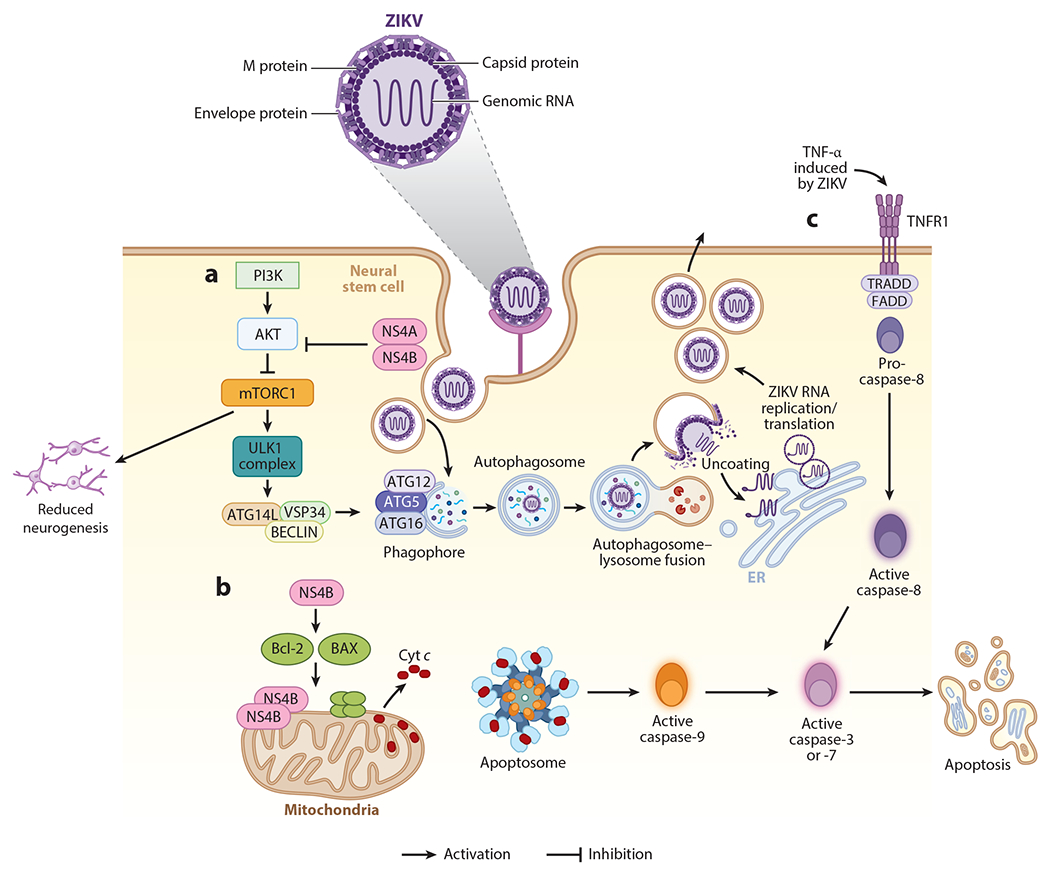Figure 1.

Intrinsic immunity and mechanisms of antagonism by Zika virus (ZIKV). (a) ZIKV proteins NS4A and NS4B can block the activation of AKT and subsequently lead to the inactivation of mTORC1, allowing activation of the ULK complex by AMP-activated protein kinase and the initiation of the autophagosome formation through ATG16. ZIKV is internalized via endosomes and autophagosomes. The autophagosome fuses with the lysosome, leading to the acidification of the autophagolysosome and activation of proteases to degrade the viral components. This process could be beneficial for ZIKV because acidification allows fusion of the ZIKV envelope with the endosomal membrane, allowing the viral RNA to reach the cytoplasm. The inhibition of the AKT-mTOR pathway has an adverse effect in the proliferation of the infected cells, with catastrophic consequences in the formation of the neuronal network and tissue development. (b) ZIKV NS4B protein can localize near the mitochondria membrane and activate the Bcl-1-associated X protein (BAX) to form a complex with Bcl-2,which interacts with the mitochondrial voltage-dependent anion channel, leading to loss in membrane potential and release of cytochrome c (Cyt c). This in turn leads to the activation of the intrinsic apoptosis pathway, with the activation of caspase-9 and caspase-3. (c) The activation of the extrinsic pathway can be a bystander effect, since it is mediated by the activation of cell death receptors FAS and TNFR1, and it is induced by external signals such as tumor necrosis factor alpha (TNF-α), leading to the activation of caspase-8 and caspase-3 to induce cell apoptosis.
